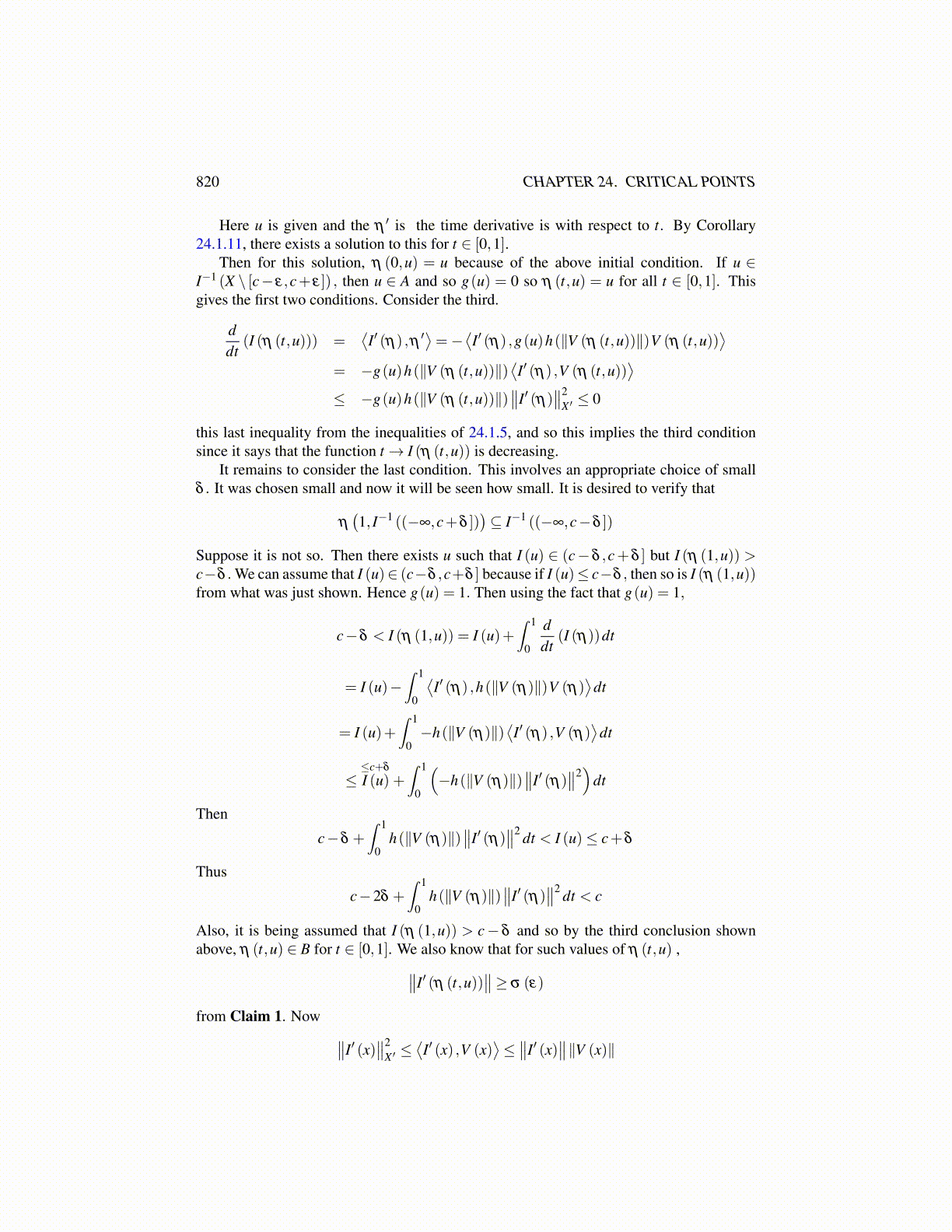
820 CHAPTER 24. CRITICAL POINTS
where r→ h(r) is a decreasing function which has values in (0,1] and equals 1 for r ∈ [0,1]and equals 1/r for r > 1.
1h(r) = 1
r
h(r) = 1
Here u is given and the η ′ is the time derivative is with respect to t. By Corollary24.1.11, there exists a solution to this for t ∈ [0,1].
Then for this solution, η (0,u) = u because of the above initial condition. If u ∈I−1 (X \ [c− ε,c+ ε]) , then u ∈ A and so g(u) = 0 so η (t,u) = u for all t ∈ [0,1]. Thisgives the first two conditions. Consider the third.
ddt
(I (η (t,u))) =⟨I′ (η) ,η ′
⟩=−
⟨I′ (η) ,g(u)h(∥V (η (t,u))∥)V (η (t,u))
⟩= −g(u)h(∥V (η (t,u))∥)
⟨I′ (η) ,V (η (t,u))
⟩≤ −g(u)h(∥V (η (t,u))∥)
∥∥I′ (η)∥∥2
X ′ ≤ 0
this last inequality from the inequalities of 24.1.5, and so this implies the third conditionsince it says that the function t→ I (η (t,u)) is decreasing.
It remains to consider the last condition. This involves an appropriate choice of smallδ . It was chosen small and now it will be seen how small. It is desired to verify that
η(1, I−1 ((−∞,c+δ ])
)⊆ I−1 ((−∞,c−δ ])
Suppose it is not so. Then there exists u such that I (u) ∈ (c− δ ,c+ δ ] but I (η (1,u)) >c−δ . We can assume that I (u)∈ (c−δ ,c+δ ] because if I (u)≤ c−δ , then so is I (η (1,u))from what was just shown. Hence g(u) = 1. Then using the fact that g(u) = 1,
c−δ < I (η (1,u)) = I (u)+∫ 1
0
ddt
(I (η))dt
= I (u)−∫ 1
0
⟨I′ (η) ,h(∥V (η)∥)V (η)
⟩dt
= I (u)+∫ 1
0−h(∥V (η)∥)
⟨I′ (η) ,V (η)
⟩dt
≤≤c+δ
I (u) +∫ 1
0
(−h(∥V (η)∥)
∥∥I′ (η)∥∥2)
dt
Then
c−δ +∫ 1
0h(∥V (η)∥)
∥∥I′ (η)∥∥2 dt < I (u)≤ c+δ
Thus
c−2δ +∫ 1
0h(∥V (η)∥)
∥∥I′ (η)∥∥2 dt < c